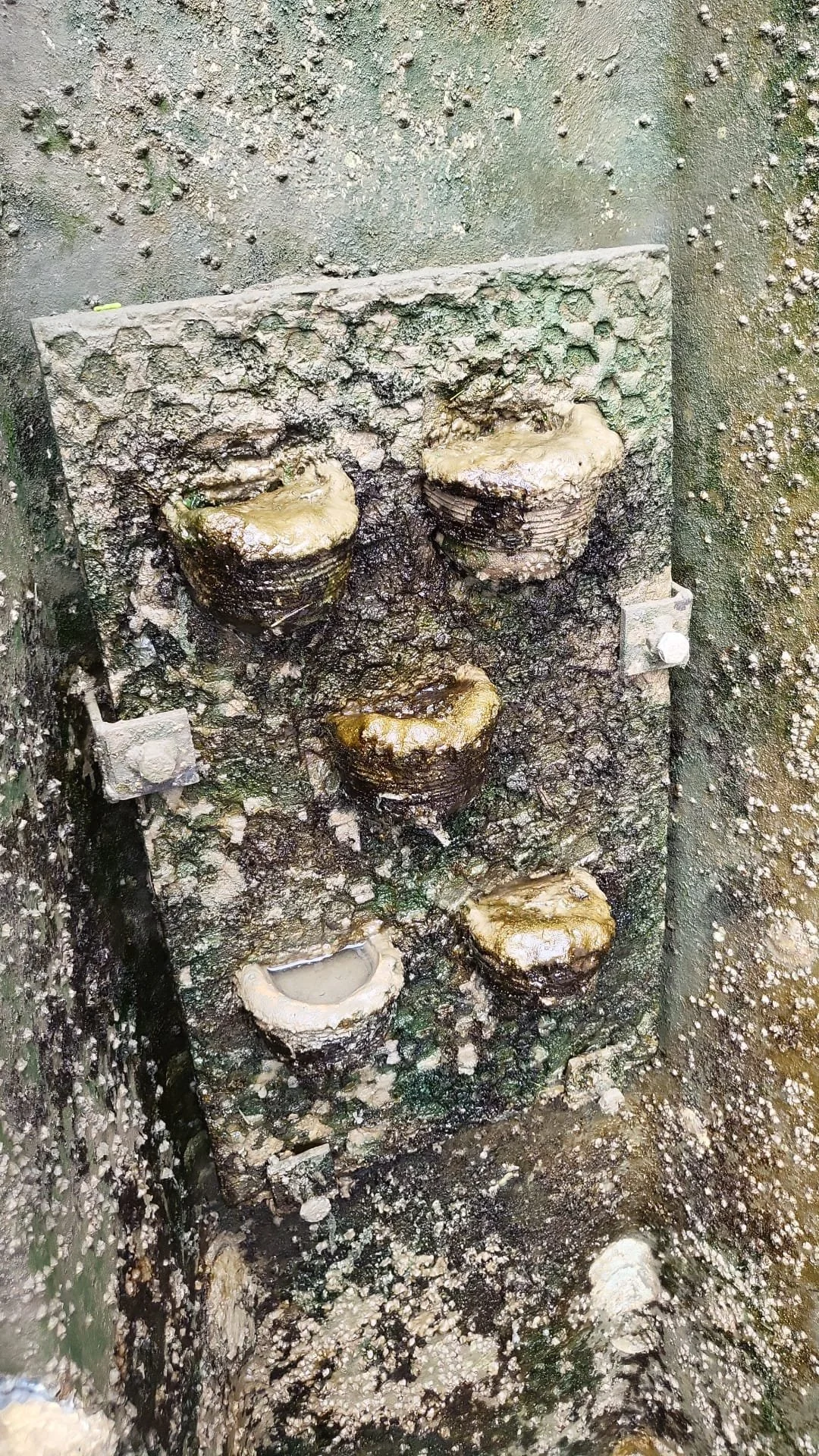ExoHabitats for Nature Inclusive Harbours
➤ Summer 2020 ➤ Brightlingsea Harbour, Essex ➤ Brightlingsea Harbour Commissioners
Problem
Sheet piling is widely used in coastal areas, commonly being used to stabilise soft or shifting banks. Brightlingsea Harbour in Essex is one such harbour which uses metal sheet piling as for bank stability anderosion control.
Sheet piling is effective, but contributes very little in terms of habitat for marine species.
Solution
Our ExoHabitats seek to provide suitable habitats for marine organisms whilst complimenting the effectiveness of traditional sheet pile. Our units can be retrofitted onto areas where sheet pile is currently used, minimising environmental disturbance while benefitting biodiversity though habitat provision. Unique micro textures and macro features can be incorporated to target specific species, such as cups which collect intertidal mud and prevent organisms from drying out.
Together with the Brightlingsea Harbour Commissioners, we installed several ExoHabitats using custom steel brackets.
Results
Together with the Brightlingsea Harbour Commissioners, we installed several ExoHabitats which are helping to build the nature-inclusivity of the coastal defences we use to protect communties against coastal erosion. Monitoring is ongoing and will allow us to identify which species can utilise this new habitat on the sheer walls of Brightlingsea Harbour.
So far, the units have demonstrated considerable bioreceptivity, having been colonised by a range of pioneer species. The ongoing collection of data will be used to inform us of improvements to design which will maximise the benefits for nature and help our clients to achieve their project goals.

